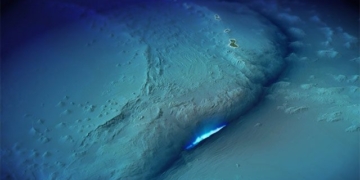On July 29, the Ministry of Health officially issued guidelines for the diagnosis, treatment, and prevention of monkeypox in humans.
Accordingly, monkeypox is an acute infectious disease that has the potential to cause an outbreak, caused by the monkeypox virus. The disease originates from Africa and is transmitted from animals to humans and from person to person through direct contact with skin lesions, bodily fluids, sexual intercourse, respiratory droplets, contaminated objects, and from mother to child.
The main symptoms of the disease include fever, skin rashes in the form of blisters, and swollen lymph nodes, which can lead to severe complications and even death.
Distinguishing Monkeypox from Other Diseases
- Monkeypox: Rashes tend to be centrifugal, commonly found on the face, palms, and soles. Rashes may also occur on mucous membranes of the eyes and mouth. Rashes appear at the same age and time; blisters may be solitary or form clusters on the skin.
- Smallpox: Rashes appear in sequence: face – hands, forearms – torso. Rashes appear after the first 2-3 days.
- Chickenpox: Rashes first appear on the face and torso, quickly spreading throughout the body. Rashes appear at different ages and times.
- Hand, Foot, and Mouth Disease: Mouth sores, rashes on the palms, soles, knees, and buttocks. Rashes appear across various ages, with some rashes being unclear or only mouth sores.
- Disseminated Herpes: Usually appears in the oral and genital mucosa, then rapidly spreads throughout the body. Blisters cluster together, are painful, and burst quickly.

Distinguishing characteristics between monkeypox and other diseases. (Photo: Ministry of Health)
The Ministry of Health states that monkeypox progresses slowly, while smallpox, chickenpox, hand-foot-and-mouth disease, and disseminated herpes progress rapidly. The size of rashes in monkeypox and chickenpox is similar, ranging from 5-10mm, while the rashes in hand-foot-and-mouth disease or disseminated herpes are smaller, only 2-3mm.
Rashes from monkeypox also last longer, from 2 to 4 weeks, while chickenpox rashes last 1-2 weeks, rashes from hand-foot-and-mouth disease last less than 7 days, and rashes from disseminated herpes burst quickly after 3-4 days.
Common Points of These Diseases, Except Disseminated Herpes, Include Fever Symptoms.
In addition to fever symptoms, monkeypox also presents with swollen lymph nodes throughout the body, while smallpox presents with fever, diarrhea, body aches, and fatigue. Chickenpox presents with fever and fatigue. Hand-foot-and-mouth disease presents with fever, fatigue, sore throat, loss of appetite, and diarrhea.
Due to the rashes, these diseases can leave scars. Specifically, monkeypox can leave pockmarks. Smallpox can leave deep pockmarks. Chickenpox may leave shallow scars. Hand-foot-and-mouth disease may leave dark spots, rarely ulcers or secondary infections. Disseminated herpes may leave dark spots.
Stages of Monkeypox
The guidelines from the Ministry of Health outline the stages of monkeypox as follows:
Incubation Period: 6 – 13 days (ranging from 5 – 21 days): Infected individuals do not show symptoms and cannot transmit the virus.
Illustration of a vial of monkeypox vaccine. Photo: REUTERS
Prodromal Stage: Lasts from 1 – 5 days with the main symptoms being fever and swollen lymph nodes throughout the body. Patients may also experience headaches, fatigue, chills, sore throat, and muscle aches. The virus can be transmitted to others from this stage.
Rash Stage: Characterized by the appearance of skin rashes, usually occurring 1 – 3 days after fever, with the following characteristics:
- Location: Rashes tend to be centrifugal, commonly found on the face, palms, and soles. Rashes may also be found in the mouth, eyes, and genital area.
- Rash Progression: Sequentially from macules (flat lesions) to papules (raised lesions), then to vesicles (fluid-filled lesions), pustules (lesions filled with yellow fluid), followed by crusting, peeling, and possible scarring.
- Size of Skin Lesions: Typically ranges from 0.5 – 1 cm.
The number of skin lesions on an individual can range from a few to numerous. In severe cases, lesions may merge to form large areas of skin damage.
Recovery Stage: Symptoms of monkeypox can last from 2 to 4 weeks and then resolve on their own. Patients will no longer exhibit clinical symptoms, and the scars on the skin may affect aesthetics but no longer pose a risk of transmission to others.


















































